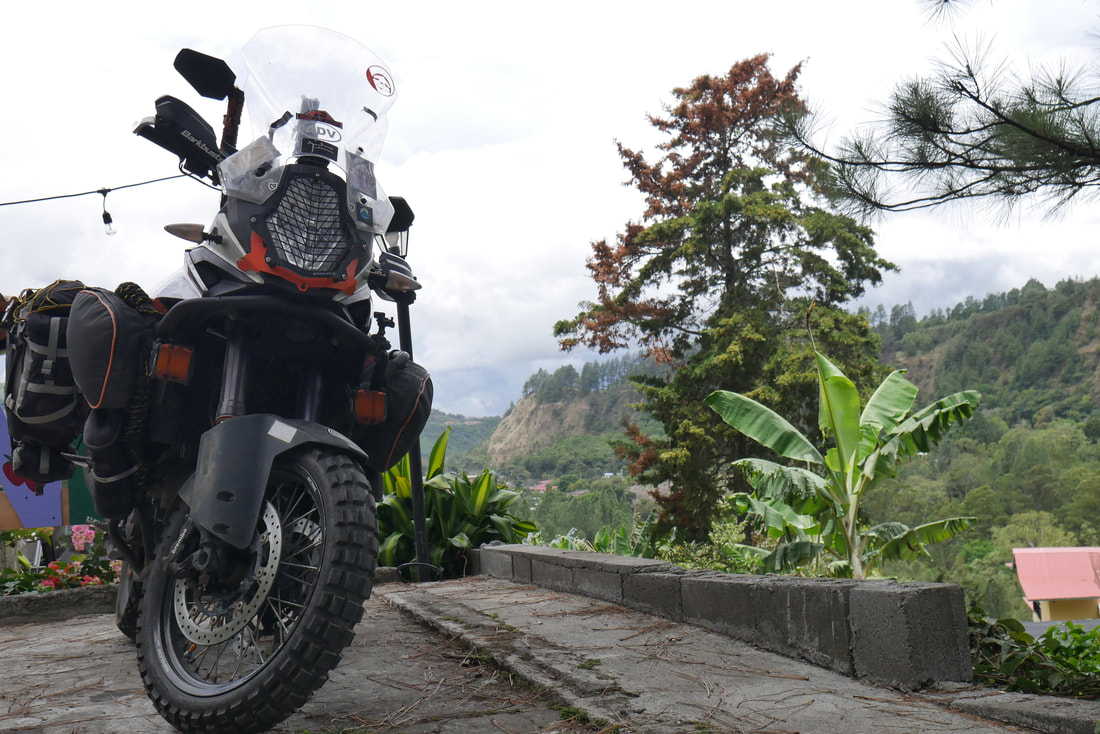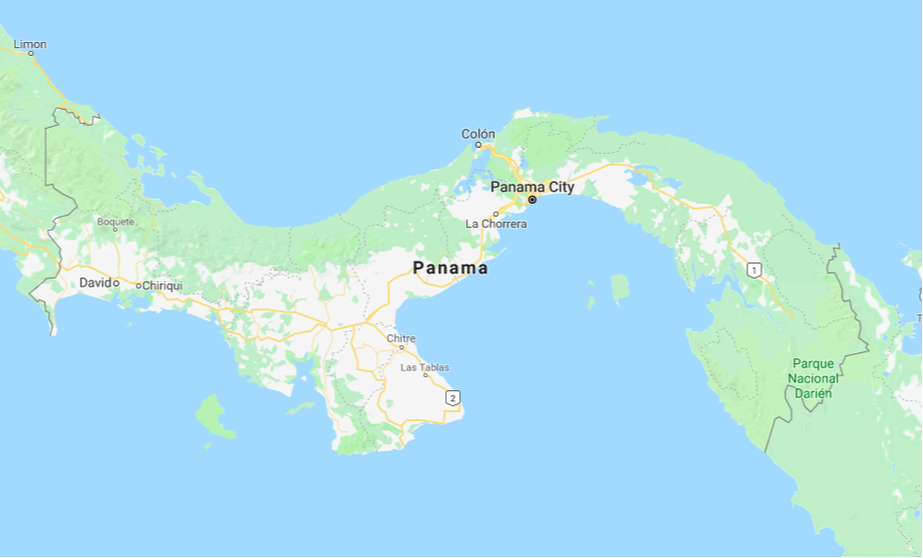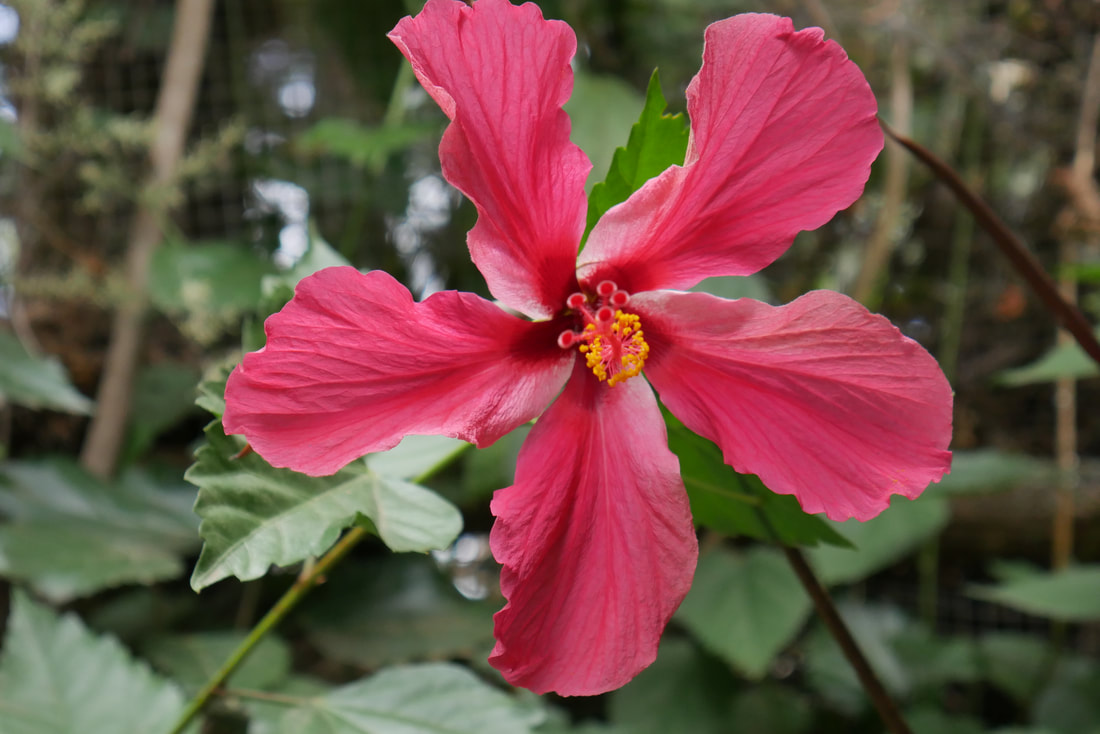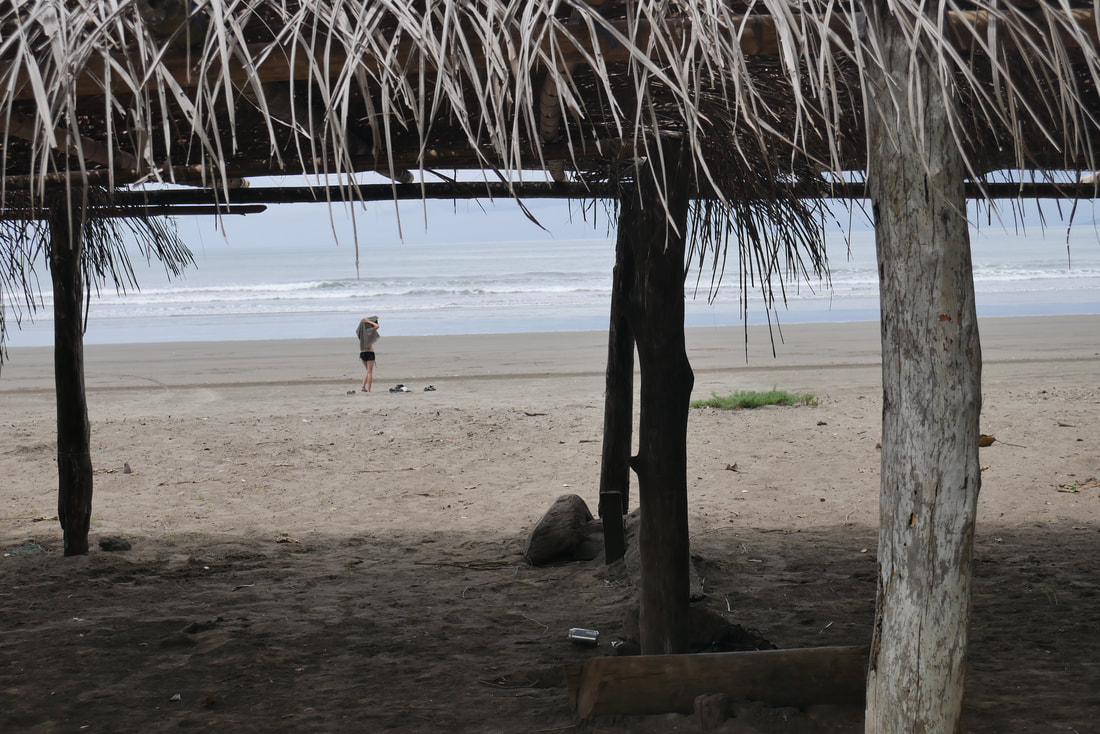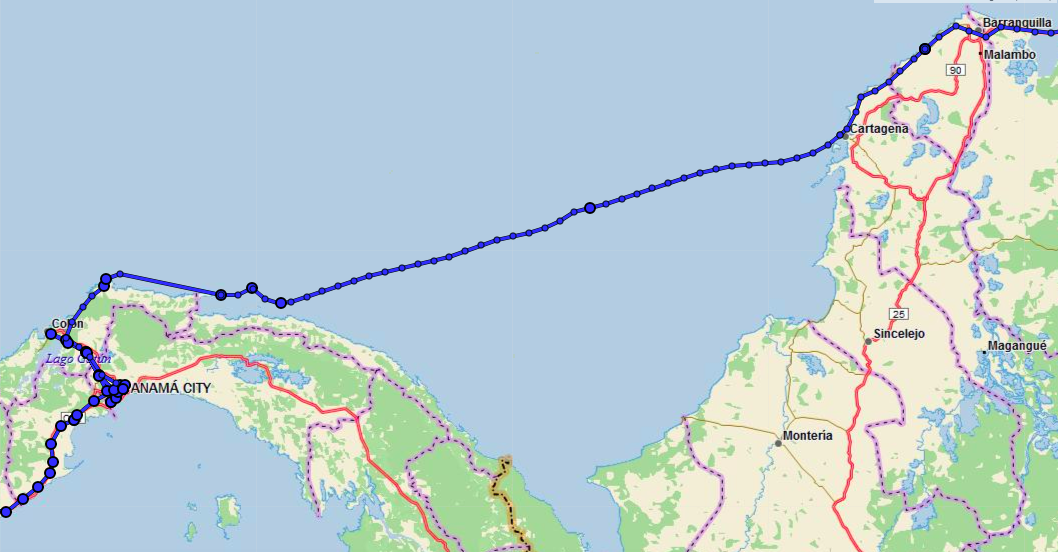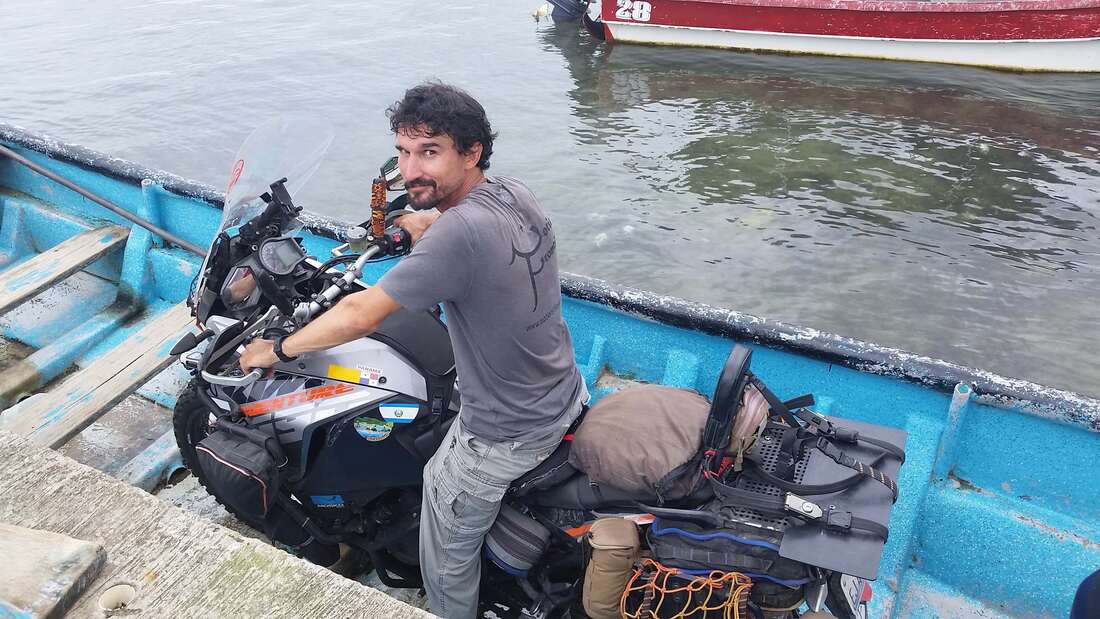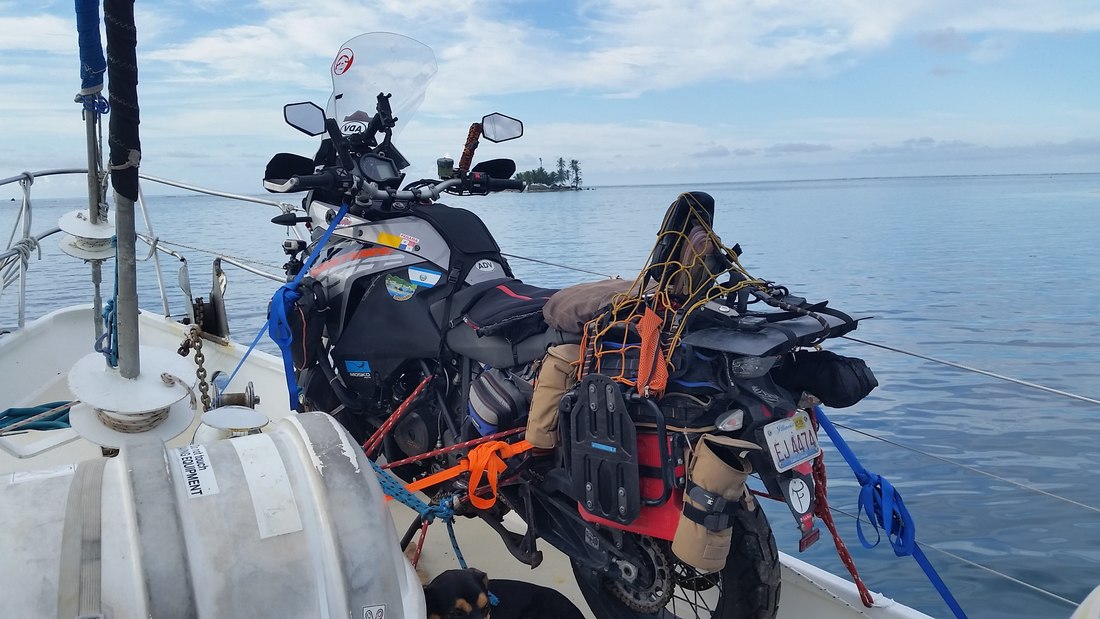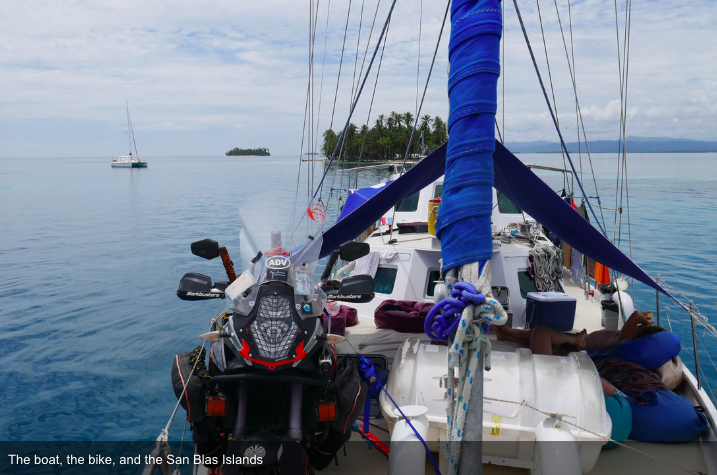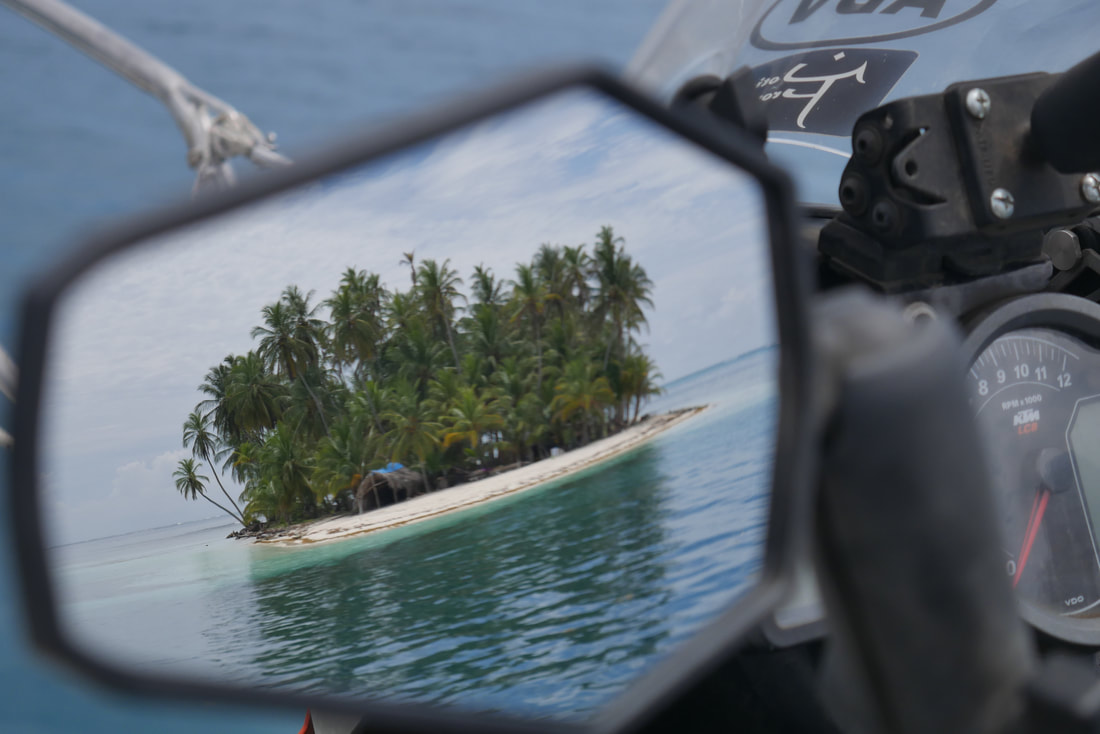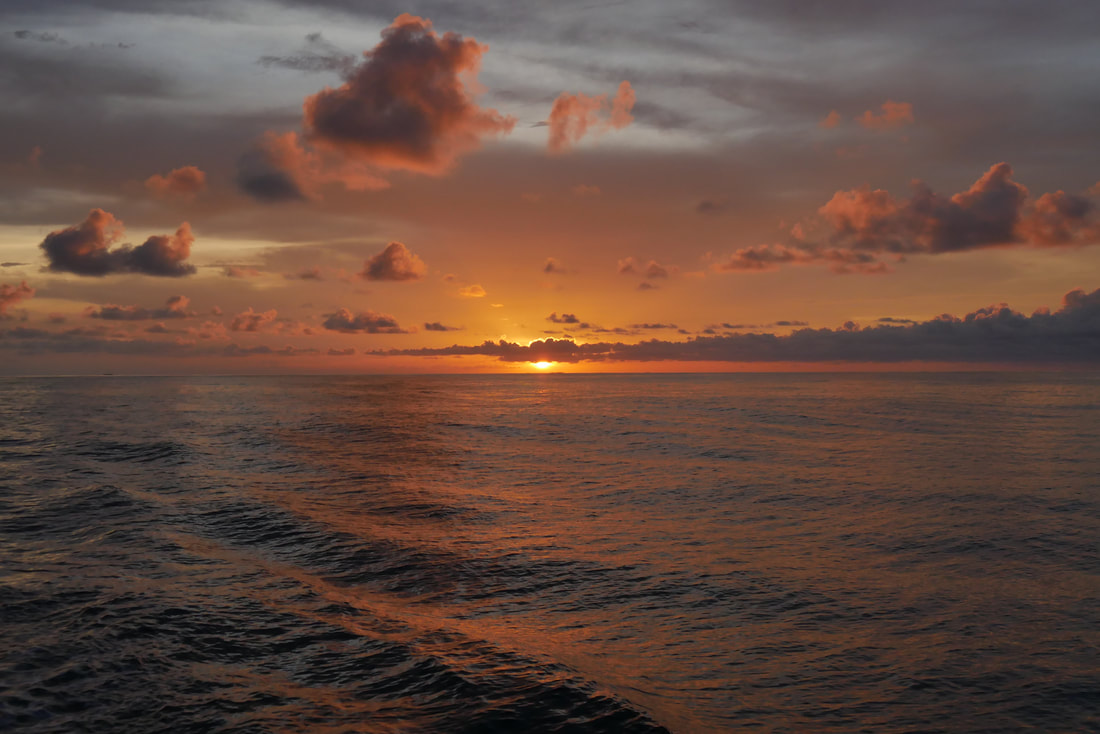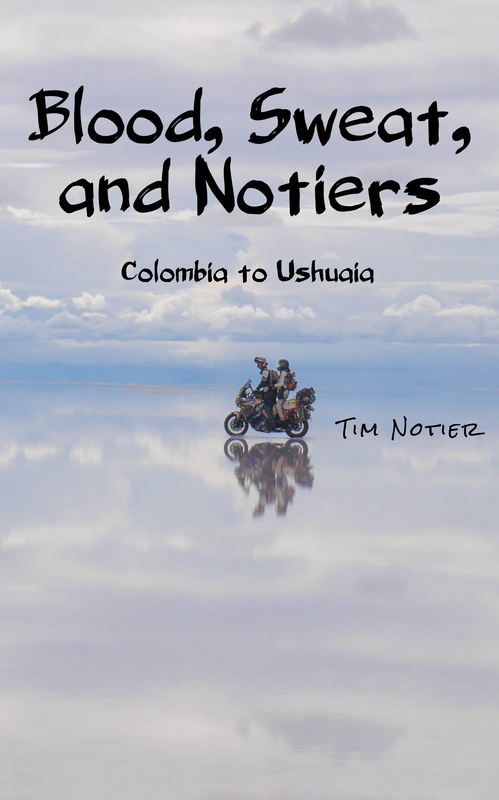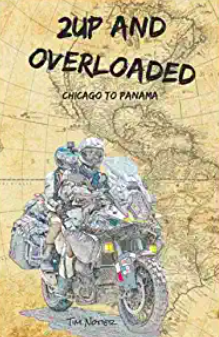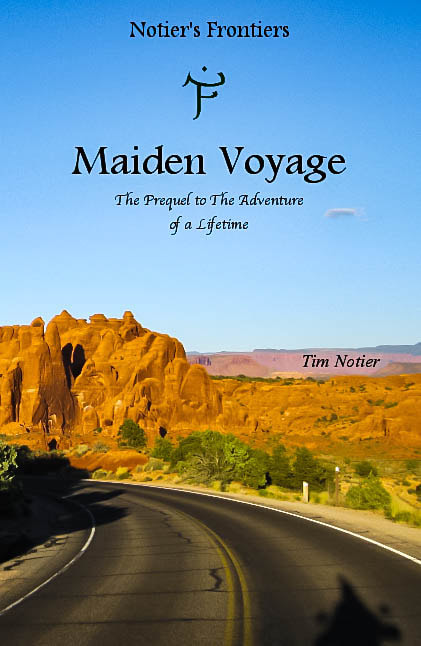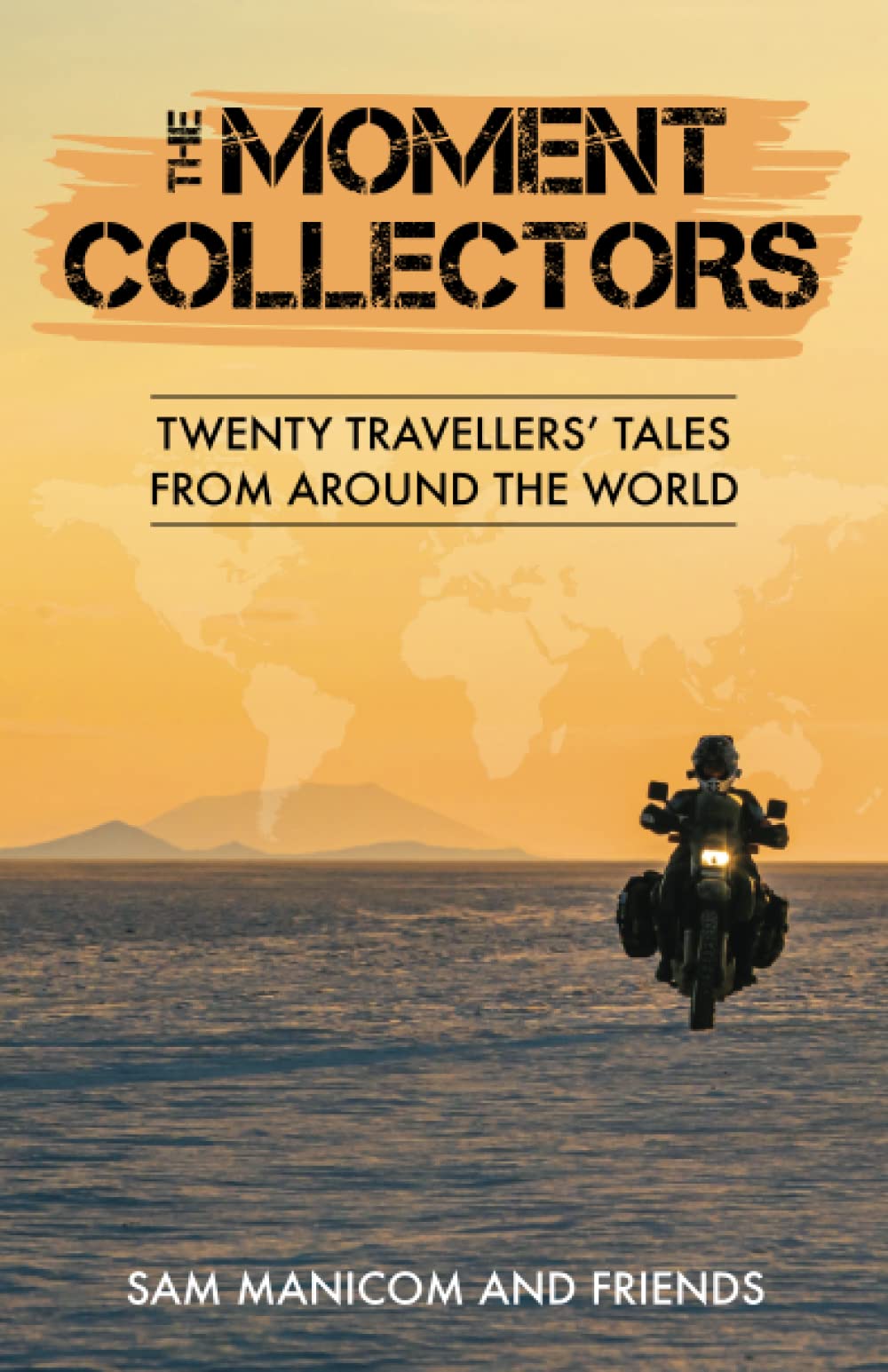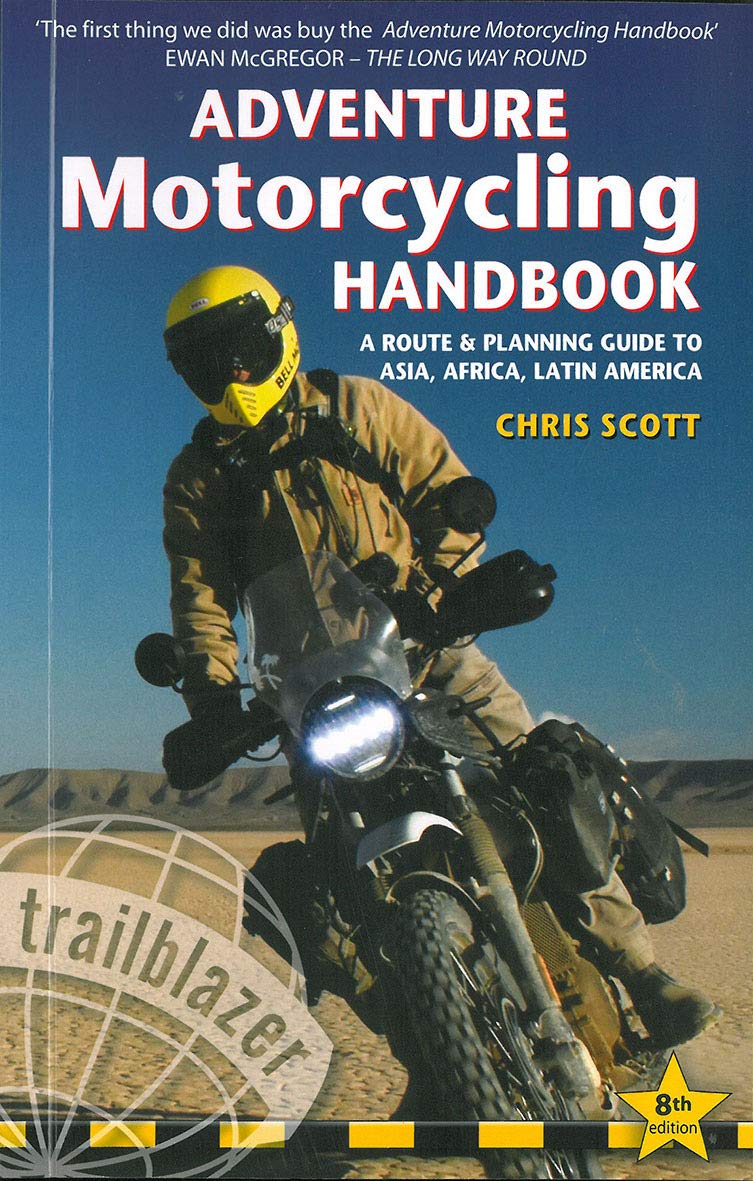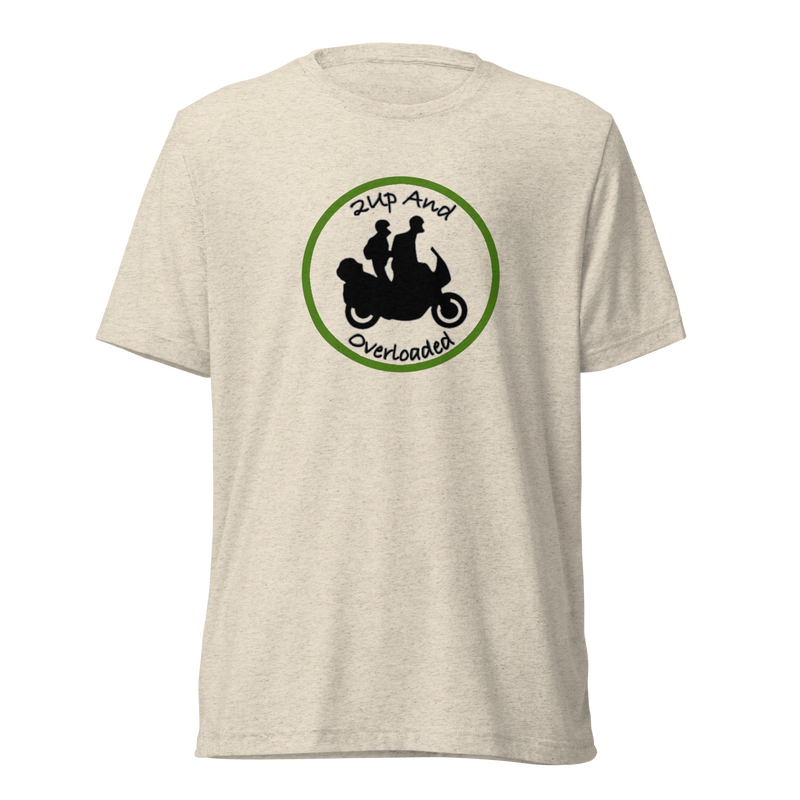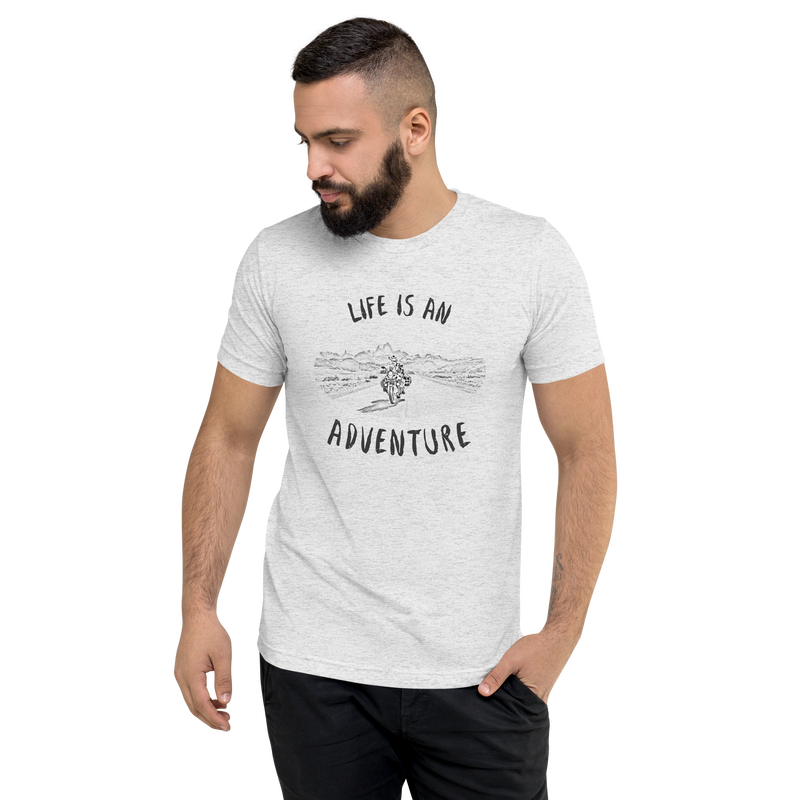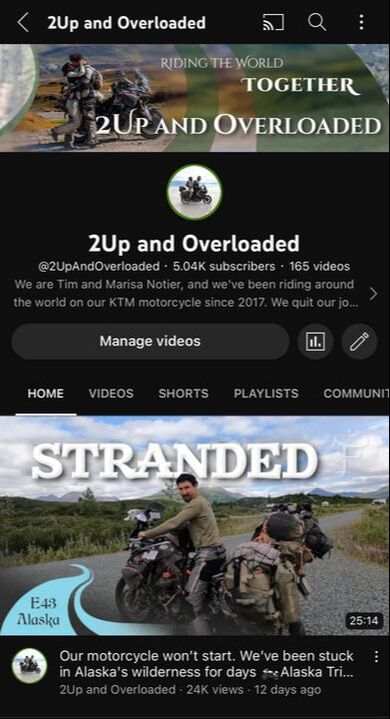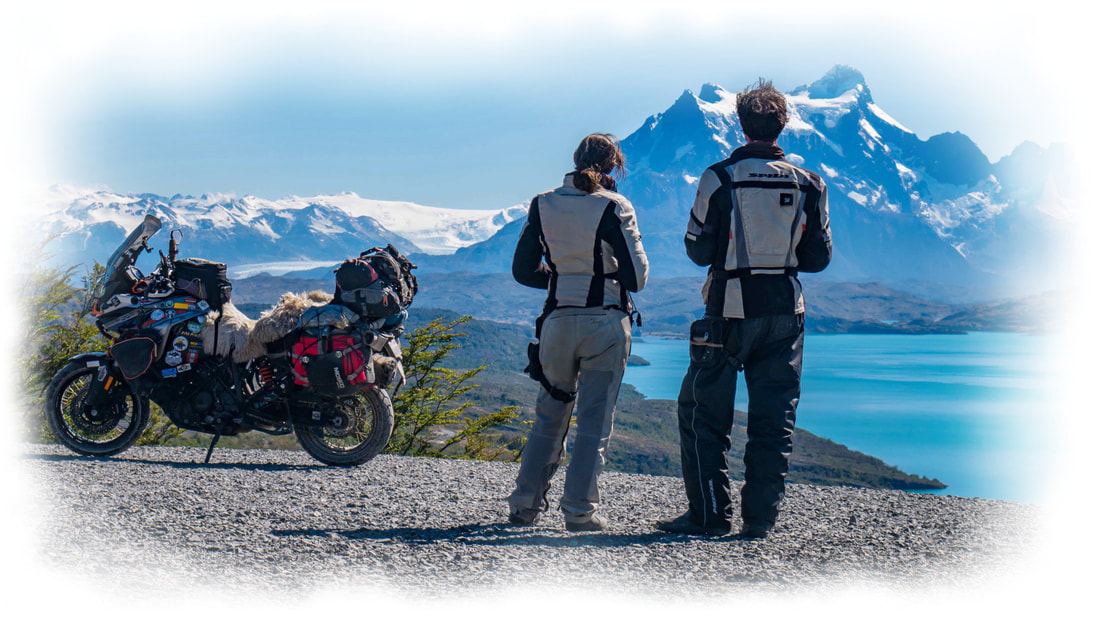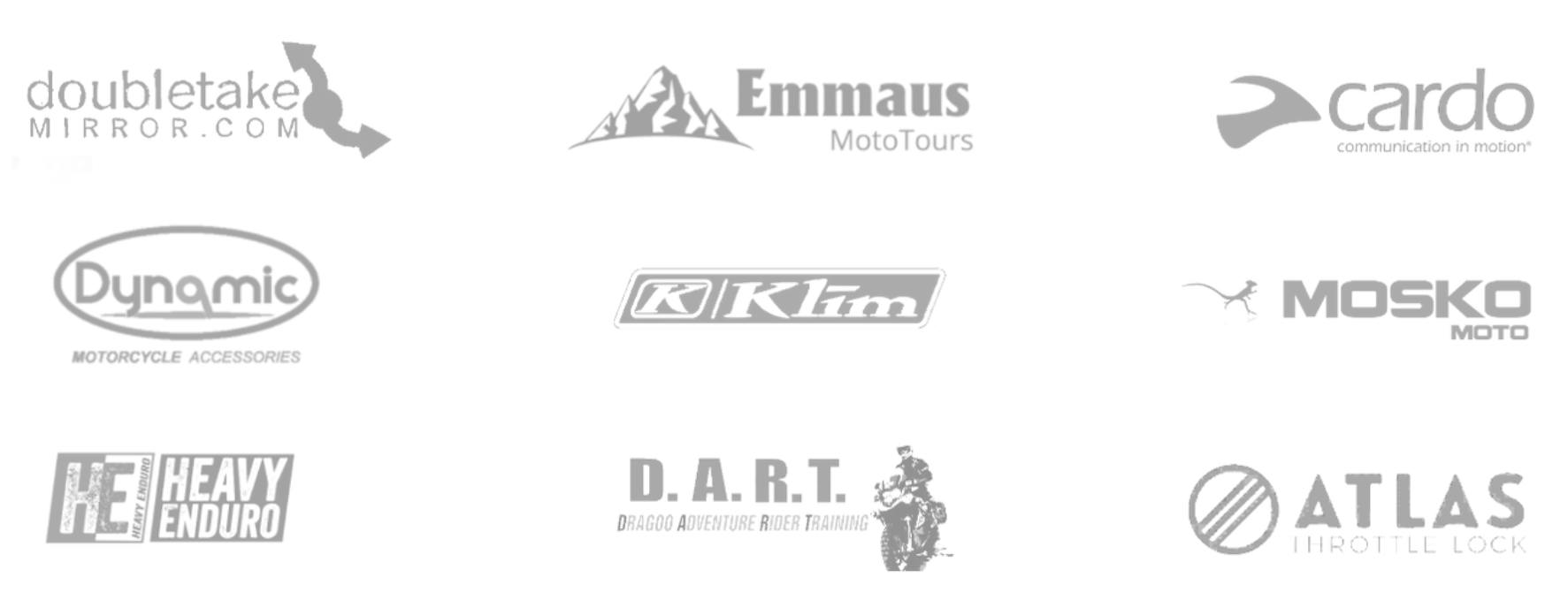By Marisa If you can't see the video, you can find it here. Since Panama was our last stop in Central America before heading into South America, and because Tim and I were so excited for the vast stretches of pure nature that South America had to offer, we may have not experienced Panama for what it’s worth. We rode through pretty quickly on the Pan-American highway and spent much of our time doing customs paperwork to get the bike into Colombia. In many ways, we were mentally checked out of Central America and already thinking about what was to come, and so for those reasons we did not take our time to appreciate Panama as we could have. There is another problem with Panama. Tim and I are from the Great Plains, an area of the world that is flat and open, and once outside of the city of Chicago, there is nothing but corn fields for as far as you can see in any direction. We are used to wide open spaces and we love them. Our favorite places to go in the States are National Parks out west: true wilderness. Even though we’re from Chicago, we’re not big fans of cities and prefer nature where people are few and far between. But once you go south through Mexico and Central America, you find that the land is shaped like a funnel. Populations and nature are squeezed together closer and closer, all until you get to Panama which is the ultimate culmination of the funnel: long and narrow and squished. Your options for exploration on a motorcycle are even more hindered by the fact that the northern side of Panama is fairly road-less, poverty-stricken, and neglected by the government for services and infrastructure. Besides Bocas Del Toro, most of what people go to see in Panama is along the Pacific, and its main thoroughfare is the Pan-American highway. Everyone who travels to Panama takes this one road to get around. Some travelers take side tours to the coast and mountains like we did, but eventually everyone all ends up in the urban center of Panama City. It felt restrictive, and for Tim and I, we wanted nothing more than to get to South America where the vast open spaces begin again. We wanted to take back-roads into the unknown whenever we felt the whim, and so we spent much of our time in Panama rushing through, just dreaming of Colombia. BoqueteBut that is not to say that we didn’t enjoy a few incredible locations in Panama. The first place of interest was the mountainous village escape from the heat: Boquete. It is beautifully rainy, misty, and chilly in this region, and has a lot to offer the thrill-seeking traveler as far as white-water rapids, canyoning, and rappelling (which we did not do). There is even a volcano that if you climb to the top of it, and the weather is in your favor, then you can see both the Atlantic and Pacific Oceans, the only place in the world to do so. Unfortunately, Boquete is also extremely popular with American tourists, as we heard more English spoken there than Spanish. But overall, it is a lovely region of Panama that has all the amenities you could want, though we discovered it does generally come at a high price. Las Lajas BeachThis is a Pacific Coast beach town that is known to be laid-back and a great place to rent a little cabin right on the oceanfront. Unfortunately for the days that we were there, it rained and was overcast the entire time. But we did check out the beach and found it to be wide, pristine, and with nobody else there. Definitely a big difference from the crowded beaches of Playa Del Carmen in the Yucatan, so I could see how when the sun was out, it would be a perfect beach. The Panama CanalThe Panama Canal is the first thing I think of when I think of Panama, and there are no shortage of expensive tours and boat trips you can take to see this historic engineering marvel. But Tim and I decided to do the cheap version, and see the Canal from atop its bridges. It is impressive, and though it isn’t the actual dividing line between Central and South America, it does feel like a bit of an important accomplishment to drive over it. Panama CityThe country's financial and urban epicenter, Panama City is a true metropolis, the type of which we had not seen since the States. Beautiful glittering highrises, huge upscale malls, and metro subway stations dot the landscape. They are even constructing a monorail. Though we are not city people, Panama City is a great place to get your urban fix of things you couldn’t find on the road (such as new quality jeans for Tim), as well as new gear or bike repairs. There is one major problem with Panama City for the foreign vehicle rider, and it’s the tolls. Because unless you have gotten the special Panapass from a government office before running into one of these tolls, then you are out of luck, as we found ourselves to be on several occasions. These toll booths are unmanned and even when we did find a police officer and tried to give them the right amount of money, they would laugh and say you can’t pay in cash. It’s impossible. So you just have to wait there and pray for the bar to go up as everyone waits behind you, and when it does raise from some malfunction, you rush through as fast as you can (because the bar comes back down like a guillotine), and hope that the government doesn’t figure out how to bill you the fine. We asked lawyers and officials what a foreigner is supposed to do about this, and they all told us to simply avoid the highways in Panama City. Great. But besides that, Panama City was a nice and essential stop-off point, especially to organize ourselves for our next nerve-wracking, yet amazing leg of our adventure: crossing the Darien Gap. Crossing the Darien GapIt is possible to drive all the way from the most northern tip of Alaska down to the southern tip of South America, except for the Darien Gap. This stretch of road-less rainforest between Panama and Colombia is known for its thick jungle and as the hideout of the Colombia's FARC armed rebels. Though people claim the area is becoming less lawless as infrastructure slowly pushes in, Tim and I were not excited to test our luck at getting our the bike through the wild jungle. So in order to get from Panama to Colombia, we knew we’d either have to fly the bike or take a boat. Both options are similar in price, though the boat is the more romantic of the two. Also, I've always had a desire to do an extended boat trip for days on end over the open sea. So that’s what we went with: five days aboard a sailboat that can house about 20 people along with our motorcycle tied to the front. Unfortunately, I did get seasick a fair amount, and my romantic vision of pirating along the Caribbean with the wind in my hair turned into me laying in my bed in the cabin trying not to feel nauseous. Thank goodness for Dramamine. But it was an experience I wouldn’t exchange for anything. Boarding the Boat with a BikeGetting our 500 lb. motorcycle on and off a sailboat is no easy task, and was one of the more worrisome things we’ve done on our trip. Because one false move could mean the bike falls into the sea, which would be the end of everything for us. With the help of some strong local sailors, and through sheer muscle power, we got the bike off the dock and into a small wooden boat called a lancha. With Tim on top of the bike to keep it steady, we then steadily made our way over to the main sailboat anchored off shore. Then by using the motorized hoist of the ship’s halyard line securely wrapped around the bike’s midsection, we were able to lift it on deck and then fasten it to the ship itself. It was stressful! And then for the entire boat ride we knew we’d just have to repeat the process again at the end to get the bike off. Meanwhile, the waves and salt air were splashing the motorcycle every second of every day it was onboard. We could literally watch it rust in front of our eyes, but the captain said she’d seen people try to cover their bikes, even wrap them in plastic, but the salt still got in. Best thing was to just wash it thoroughly once on land, which we did. Twice. If you can't see the photo gallery, you can find it here. Sailing the San Blas IslandsFrom Colón, Panama to Cartagena, Colombia, we sailed along the Caribbean’s San Blas island archipelago, which is actually its own autonomous region owned by the Kuna Yala indigenous people. There are 378 islands in total, but when I say islands, I mean that some of them may just be a ten foot stretch of sand rising a few inches above the water. I would say most are no more than 70 ft. across, and plant life really only consists of coconut trees. But it’s the ocean life that people go there for, and snorkeling the reefs was a truly unforgettable experience, not to mention the ship’s chef cooked up some of the freshest, most delicious fish I’ve ever eaten. The islands are absolutely idyllic. But there was something that struck me as sad about them. Though most are uninhabited, the Kuna people of the inhabited islands have set up shop to supply the steady stream of drunken tourists with beer and rum. These indigenous people certainly make money from the tourists (I am one as well I realize), and charge the boats that come per person too, but their peaceful way of life has been completely overrun by the daily onslaught of party-goers, who for the most part, are using this as their one vacation in the year to get away from the daily grind. But the Kuna people must live with cleaning up our trash every single day. Most days, more than one boat will dock at their island, and many will stay the night anchored right off shore. It’s a bit like living in a 24/7 bar, as there is no escape from the pumping music and screams of people throughout the night. I can’t imagine what the Kuna people must think of the outside world, and I also don’t want to imagine how they must feel about how their island life has changed in just a single generation. So if you come to the islands to experience the beauty and serenity of the ocean glittered in stars at night, as I had, then this is certainly not the place to do so as these islands are more like Ibiza at spring break than a peaceful getaway. One Last Note about Sailing a Motorcycle Across the Darien GapNot long after we arrived in Cartagena, the Colombian government passed a new law prohibiting the import of motorcycles via boat. That meant that all of our traveling friends who had reserved spaces on boats to bring their bikes over from Panama to Colombia (some of them reserving six months in advance), now had to all fly their bikes. Supposedly the company we used, Wildcard Sailing, is still able to bring motorcycles in, but the most famous motorcycle transport boat, the Stahlratte, had to cancel all motorcycle reservations. So for any future motorcycle adventure riders out there looking to overland the Americas, check on this with the companies before assuming you will be able to do what we did. And please contact us if you have questions on flying versus boating. Also, be aware that shipping your bike in reverse from Colombia to Panama has been prohibited for quite some time. Perfectly PanamaSo although we did not experience all of Panama as we possibly should have, what we got to see was pretty special, especially our boating experience around the Darien Gap. And now that we have safely arrived in Colombia, bike and all, the funnel has opened up again, and we can start to enjoy the vast wilderness once more. Take a look at the Gear we use! |
Follow UsRide with us from Chicago to Panama!
2Up and Overloaded Get inspired by the tale that started it all:
Maiden Voyage 20 author's tales of exploring the world!
The Moment Collectors Help us get 40 miles further down the road with a gallon of gas!
Become a Patron for early access to our YouTube Videos!
Subscribe to our YouTube Channel!
Subscribe to our Blog by Email
|
2Up and Overloaded
Join our clan of like-minded adventurers...
Proudly powered by Weebly
Designed by Marisa Notier

